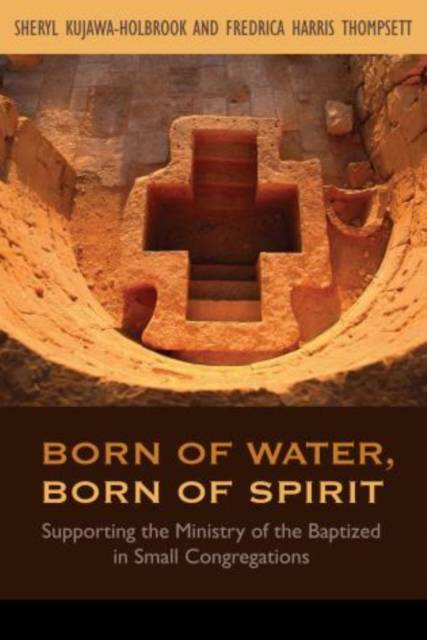
- Afhalen na 1 uur in een winkel met voorraad
- Gratis thuislevering in België vanaf € 30
- Ruim aanbod met 7 miljoen producten
- Afhalen na 1 uur in een winkel met voorraad
- Gratis thuislevering in België vanaf € 30
- Ruim aanbod met 7 miljoen producten
Zoeken
Born of Water, Born of Spirit
Supporting the Ministry of the Baptized in Small Congregations
Sheryl A Kujawa-Holbrook
Paperback | Engels
€ 48,95
+ 97 punten
Omschrijving
What does the church look like if we take the ministry of the baptized the priesthood of all believers seriously? How are congregations transformed when the church supports and affirms the ministry of all the baptized, particularly in small congregations without the means to hire a seminary-trained pastor? And what ecclesial structures and educational models need to emerge in the next decades to assist these small congregations in the recovery of baptismal living and their own vitality? Sheryl Kujawa-Holbrook and Fredrica Harris Thompsett explore these questons as well as the variety of ways people in small congregations many with no more than fifty members are living out their baptism and the impact their actions are having on their congregations, judicatories, and communities, and the institutions that educate clergy. The authors argue that just because a community cannot pay a seminary-trained minister, a growing problem in remote regions, it does not mean that there is no ministry there. It does mean that we need to look at ministry and the church in a more expansive way. The stories of the congregations revealed in this book serve to inspire us about what is possible when we live intentionally as the reconciling presence of the body of Christ in the world. They also educate us about what will be needed in the years to come to lift up still more small congregations for their work in the larger community.
Specificaties
Betrokkenen
- Auteur(s):
- Uitgeverij:
Inhoud
- Aantal bladzijden:
- 208
- Taal:
- Engels
Eigenschappen
- Productcode (EAN):
- 9781566994002
- Verschijningsdatum:
- 7/04/2010
- Uitvoering:
- Paperback
- Formaat:
- Trade paperback (VS)
- Afmetingen:
- 150 mm x 226 mm
- Gewicht:
- 340 g

Alleen bij Standaard Boekhandel
+ 97 punten op je klantenkaart van Standaard Boekhandel
Beoordelingen
We publiceren alleen reviews die voldoen aan de voorwaarden voor reviews. Bekijk onze voorwaarden voor reviews.








